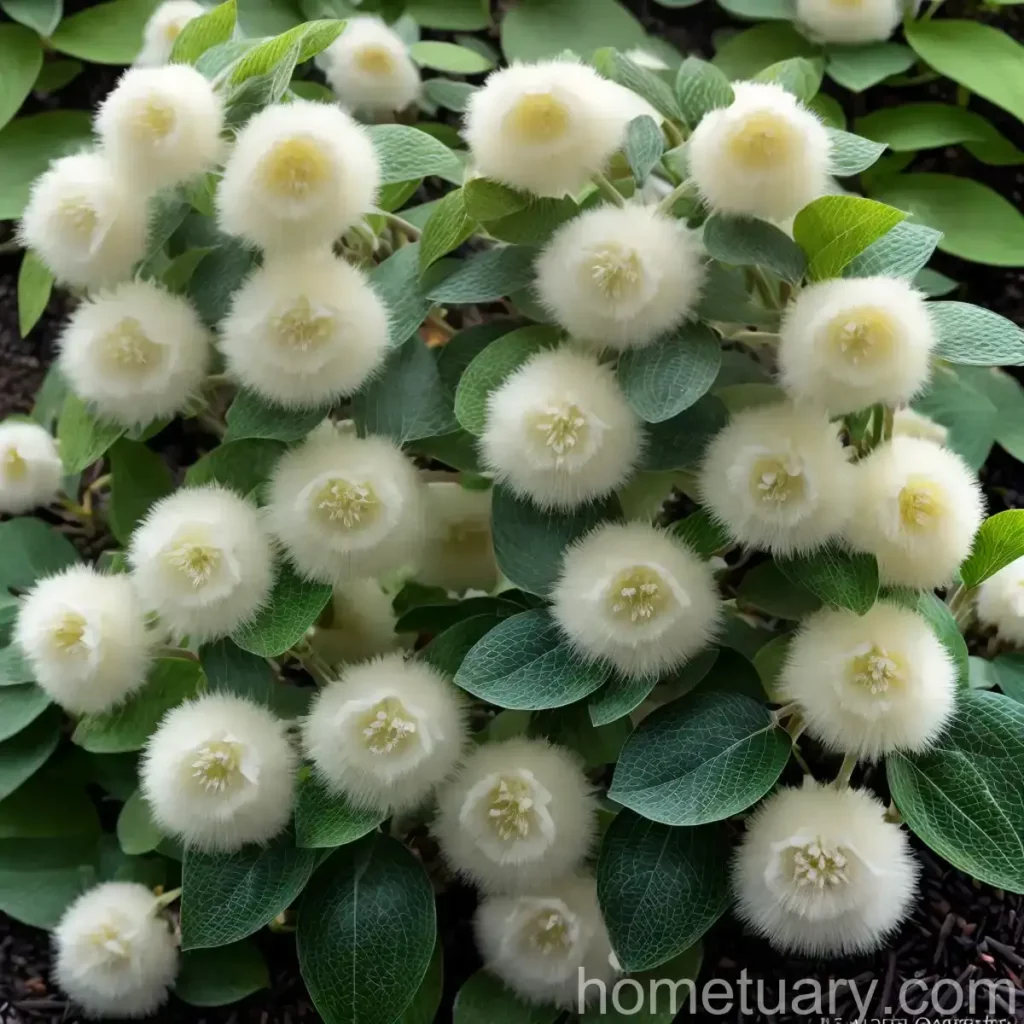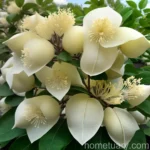The Beautiful Dwarf Fothergilla (Fothergilla ‘Mount Airy’): A Complete Guide
In the world of landscaping, the dwarf fothergilla (Fothergilla ‘Mount Airy’) stands out as a plant that adds a touch of elegance and charm to any garden or landscape. Known for its beautiful foliage, captivating blooms, and adaptable nature, this plant has gained much popularity among gardeners and landscapers.
Throughout this extensive guide, we will explore the various aspects of the dwarf fothergilla, including its characteristics, care tips, ideal growing conditions, uses, and much more. Whether you’re a seasoned horticulturist or a gardening enthusiast, this comprehensive resource will equip you with the knowledge to successfully cultivate and maintain these stunning plants.
What Is the Dwarf Fothergilla (Fothergilla ‘Mount Airy’)?
The dwarf fothergilla, scientifically known as Fothergilla ‘Mount Airy’, is a charming deciduous shrub that belongs to the Hamamelidaceae family, commonly known as the witch hazel family. This unique plant is native to the southeastern United States, where it thrives in the wild, adding beauty to landscapes with its vibrant colors and striking appearance.
Fothergilla ‘Mount Airy’ Characteristics
- Botanical Name: Fothergilla ‘Mount Airy’
- Family: Hamamelidaceae
- Common Name: Dwarf Fothergilla
- Plant Type: Deciduous Shrub
- Mature Height: 2-3 feet
- Mature Spread: 2-3 feet
- Foliage: Blue-green leaves turning to vibrant hues of orange, red, and yellow in the fall
- Flowers: White, honey-scented, bottlebrush-like blooms in spring
- Growth Habit: Compact and mounding
Now that we have a glimpse of the dwarf fothergilla’s key characteristics, let’s delve deeper into its profile, including its cultural requirements, uses, and maintenance.
Key Takeaways – Dwarf Fothergilla (Fothergilla ‘Mount Airy’)
Before we delve into the specific aspects of caring for the dwarf fothergilla, let’s highlight the key takeaways that will guide us through this comprehensive exploration.
-
Fothergilla ‘Mount Airy’ Characteristics
- Compact, mounding deciduous shrub
- Vibrant foliage changing colors in the fall
- White, bottlebrush-like spring blooms
-
Cultural Requirements
- Water: Consistent moisture, well-drained soil
- Sunlight: Partial to full sun
- Soil: Acidic, rich in organic matter
- Fertilizer: Balanced, slow-release fertilizer
- Pruning: Minimal pruning to shape if necessary
- Propagation: Softwood or hardwood cuttings
-
Uses
- Ideal for small gardens and landscapes
- Attractive in mixed borders and woodland gardens
- Excellent for erosion control
-
Common Diseases and Pests
- Diseases: Leaf spots, powdery mildew
- Pests: Aphids, scale insects
With these key takeaways in mind, let’s embark on a detailed journey through the cultural requirements, uses, maintenance, and interesting facts about the captivating dwarf fothergilla.
Culture
Cultivating the dwarf fothergilla in your garden or landscape requires an understanding of its specific cultural needs. From water and sunlight requirements to soil preferences and pruning techniques, each aspect plays a vital role in the overall health and vigor of the plant.
Water
The dwarf fothergilla thrives in consistently moist soil, making adequate water supply a crucial factor in its care. However, it is essential to ensure that the soil is well-drained to prevent waterlogging, which can be detrimental to the plant’s roots. During periods of drought, it is important to supplement the plant with additional water to maintain adequate moisture levels.
- Water Requirements:
- Consistent moisture
- Well-drained soil
- Supplemental watering during dry spells
Sunlight
When it comes to sunlight, the dwarf fothergilla thrives in partial to full sun, displaying its best growth and blooming potential under these conditions. However, it can also tolerate some shade, making it a versatile addition to various garden settings.
- Sunlight Requirements:
- Partial to full sun
- Tolerant of light shade
Fertilizer
Applying a balanced, slow-release fertilizer in spring can benefit the overall health and vigor of the dwarf fothergilla. While it is not heavy feeder, a light application of fertilizer can provide the necessary nutrients for optimal growth and bloom production.
- Fertilizer Recommendations:
- Balanced, slow-release fertilizer
- Applied in spring
Soil
The soil composition and pH level significantly impact the health and development of the dwarf fothergilla. This plant thrives in acidic soil that is rich in organic matter, mirroring its natural woodland habitat.
- Ideal Soil Conditions:
- Acidic pH (5.0-6.5)
- Rich in organic matter
- Well-drained
Pruning
Pruning the dwarf fothergilla is generally minimal and is primarily done to shape the plant or remove any dead or damaged growth. The best time for pruning is after the plant has finished flowering, allowing it to set buds for the following year’s bloom.
- Pruning Recommendations:
- Minimal pruning for shaping
- After flowering in spring
Propagation
Propagation of the dwarf fothergilla can be achieved through softwood or hardwood cuttings. Softwood cuttings are typically taken in early summer, whereas hardwood cuttings are collected in late fall or winter.
- Propagation Methods:
- Softwood cuttings
- Hardwood cuttings
- Propagation hormone may aid in root development
Uses
The dwarf fothergilla offers a myriad of uses in garden and landscape settings, making it a versatile and valuable addition to any outdoor space. Whether as a focal point in a small garden or as part of a larger landscape design, its unique characteristics make it an attractive choice for various applications.
- Ideal Uses:
- Small gardens and landscapes
- Mixed borders and woodland gardens
- Erosion control on slopes
From its ornamental charms to its functional role in preventing soil erosion, the dwarf fothergilla presents an array of opportunities for creative landscaping and garden design.
Popularity
The popularity of the dwarf fothergilla stems from its aesthetic appeal, adaptability, and relatively low maintenance requirements. Its compact size, captivating blooms, and stunning fall foliage have endeared it to gardeners and landscapers seeking to add visual interest and diversity to their outdoor spaces.
Common Diseases
Disease prevention and early diagnosis are essential for maintaining the health and vigor of the dwarf fothergilla. Being aware of the common diseases that may affect this plant and understanding their symptoms is key to implementing effective preventative measures and treatments.
- Common Diseases:
- Leaf spots
- Powdery mildew
Monitoring the plant for any signs of disease and promptly addressing any issues that arise can help ensure its long-term health and beauty.
Common Pests
Pest infestations can pose a threat to the dwarf fothergilla, potentially impacting its growth and overall condition. Being familiar with the common pests that may target this plant allows for proactive pest management and the preservation of its ornamental value.
- Common Pests:
- Aphids
- Scale insects
Implementing appropriate pest control measures, such as natural predators or targeted treatments, can help protect the dwarf fothergilla from detrimental pest damage.
Botanist’s Tips
As a plant scientist with a passion for horticulture and the natural world, I have had the opportunity to study and appreciate the unique qualities of the dwarf fothergilla. Here are some additional insights and botanist’s tips for successfully growing and caring for this exceptional plant:
Botanist’s Tip 1: Soil and pH Management
Ensuring the soil is acidic and rich in organic matter is crucial for the healthy growth of the dwarf fothergilla. Regularly testing the soil pH and making appropriate amendments as needed will provide an optimal growing environment for the plant.
Botanist’s Tip 2: Mulching for Moisture Retention
Applying a layer of organic mulch around the base of the plant helps retain soil moisture, suppress weed growth, and protect the roots during temperature fluctuations. This simple practice can significantly benefit the overall health and vigor of the dwarf fothergilla.
Botanist’s Tip 3: Observing Seasonal Changes
Closely observing the seasonal changes in the dwarf fothergilla, from its spring blooms to its vibrant fall foliage, offers a deeper appreciation for the plant’s natural beauty. Taking the time to immerse oneself in these seasonal transformations enhances the gardening experience and fosters a deeper connection with nature.
Botanist’s Tip 4: Integrating Companion Plants
Selecting compatible companion plants that complement the dwarf fothergilla in terms of color, texture, and cultural requirements can create visually appealing and harmonious garden compositions. Consider incorporating native woodland species, ornamental grasses, or other flowering shrubs to accentuate the unique qualities of the fothergilla.
Fun Facts
- The dwarf fothergilla is named after Dr. John Fothergill, an 18th-century English physician and botanist known for his contributions to natural history and plant taxonomy.
- The vibrant fall foliage of the dwarf fothergilla showcases a stunning display of colors, ranging from fiery oranges to rich reds and brilliant yellows, adding a breathtaking touch to autumn landscapes.
- In addition to its ornamental value, the dwarf fothergilla also attracts pollinators, such as bees and butterflies, with its fragrant spring blooms, contributing to the biodiversity of the garden.
Links to External Resources
For further in-depth information on the dwarf fothergilla, its cultivation, and landscape uses, I recommend exploring the following resources:
- The American Fothergilla Association – An organization dedicated to promoting the understanding and cultivation of fothergillas, including the dwarf fothergilla (Fothergilla ‘Mount Airy’).
- Missouri Botanical Garden: Fothergilla Garden Fact Sheet – A detailed fact sheet providing comprehensive information on the cultivation and characteristics of Fothergilla spp., including the ‘Mount Airy’ variety.
- University of Florida IFAS Extension: Fothergilla – Educational resources and recommendations for growing and maintaining fothergilla species in Florida landscapes.
These resources offer valuable insights, guidance, and expert knowledge to further enhance your understanding of the dwarf fothergilla and its place in horticulture and landscaping.
In conclusion, the dwarf fothergilla (Fothergilla ‘Mount Airy’) stands as a plant of unparalleled beauty and charm, captivating gardeners and nature enthusiasts with its unique characteristics and ornamental appeal. By embracing its cultural requirements, maximizing its uses, and understanding its role in the natural ecosystem, we can truly appreciate and cultivate the enchanting qualities of this exceptional shrub.
With its elegant blooms, vibrant foliage, and adaptability, the dwarf fothergilla continues to leave a lasting impression on landscapes and hearts alike, enriching our outdoor spaces with its timeless allure and botanical significance. As we continue to explore the wonders of the plant kingdom, may the dwarf fothergilla inspire and delight all who encounter its natural splendor.















